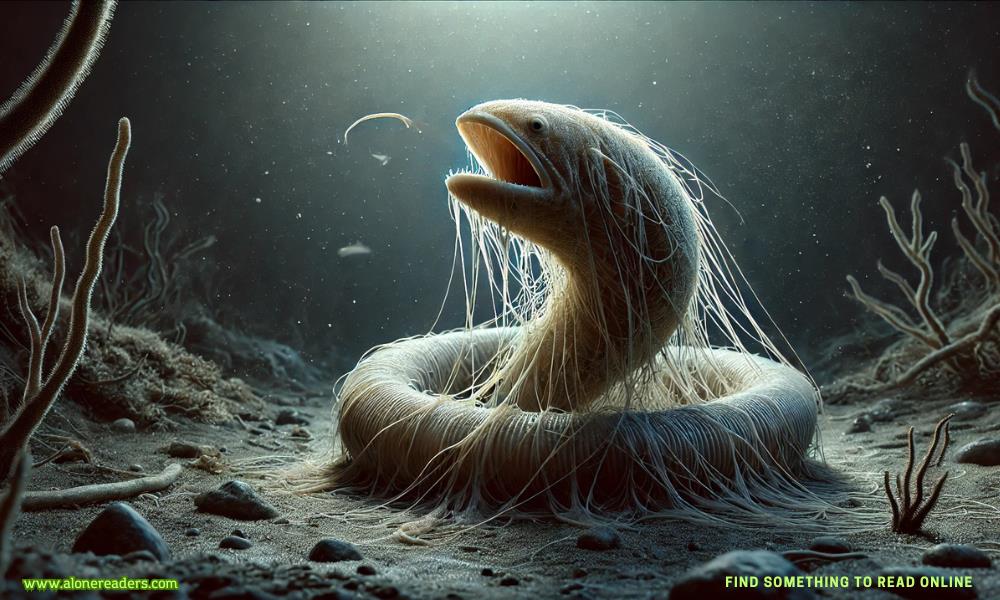
The hagfish, often referred to as the slimiest creature in the animal kingdom, is a remarkable marine organism that has fascinated scientists and nature enthusiasts alike. Found in the deep oceans around the world, these eel-like creatures have an extraordinary ability that sets them apart from every other species: they can produce vast amounts of slime in an incredibly short amount of time. In fact, a hagfish can release up to a litre of slime in less than 0.1 seconds, making them not only an evolutionary marvel but also a key player in their unique ecosystem.
Hagfish are ancient animals, with their evolutionary roots tracing back over 300 million years, long before the dinosaurs roamed the Earth. This lineage places them among the most primitive vertebrates alive today. Despite their seemingly simple anatomy, they possess unique adaptations that have allowed them to survive for millions of years. The hagfish’s defining characteristic, its ability to produce slime, serves as an ingenious defense mechanism against predators and other threats in its environment.
The slime that hagfish produce is unlike anything found in the natural world. Composed primarily of proteins and mucins, the slime rapidly expands in water, forming a gooey, sticky substance that can clog the gills of potential predators. This effectively deters attacks, giving the hagfish time to escape. What makes this slime even more fascinating is its efficiency and volume. The hagfish's slime glands, located along its body, release threads of protein that unravel and expand when exposed to seawater. Within fractions of a second, these threads form a fibrous network that traps water and creates the slime’s unique texture.
The ability to produce such copious amounts of slime in an instant is not just a defensive tactic but also a remarkable feat of biology. Scientists have studied the molecular structure of hagfish slime to understand its properties better. The slime’s protein threads are incredibly strong and flexible, comparable to spider silk in terms of tensile strength. This has led to research exploring potential applications of hagfish slime in materials science, including sustainable textiles, biodegradable plastics, and medical innovations.
While the hagfish's slime is its most notable feature, there is much more to this creature than meets the eye. Hagfish play a vital role in the marine ecosystem as scavengers. They feed on dead or dying sea creatures, using their specialized feeding apparatus to burrow into carcasses and consume them from the inside out. This behavior not only provides a food source for the hagfish but also helps in the natural recycling of organic material in the ocean. Their role as deep-sea cleaners highlights their ecological importance, ensuring that the marine environment remains balanced and free from excessive waste.
Despite their critical role in the ecosystem, hagfish often receive a bad reputation due to their slimy nature and unconventional feeding habits. Many people find them unappealing, associating their appearance and behavior with revulsion. However, these perceptions overlook the incredible adaptations and ecological contributions of this ancient species. Hagfish are a testament to the wonders of evolution, showcasing how unique survival strategies can arise in response to environmental challenges.
Interestingly, hagfish slime is not just a defense mechanism; it also has a secondary purpose. In addition to warding off predators, the slime can help the hagfish escape tight spots and evade capture. The slimy coating makes them nearly impossible to grip, whether by a predator or a human attempting to handle one. This has earned them the nickname "slime eels," though they are not true eels. Moreover, the slime can act as a barrier against harmful bacteria, protecting the hagfish from infections in their deep-sea habitat.
The production of slime by hagfish has even influenced human innovation. Engineers and biologists have collaborated to study the properties of hagfish slime for use in various industries. The slime's unique combination of strength, flexibility, and biodegradability has sparked interest in creating environmentally friendly materials. For example, researchers are exploring its potential use as a replacement for synthetic plastics, which could have significant implications for reducing plastic pollution. Additionally, the slime’s ability to form a strong, cohesive barrier could inspire advancements in medical adhesives or wound dressings.
Despite their fascinating biology and ecological importance, hagfish are not immune to the pressures of human activity. They are often caught as bycatch in fishing operations, and in some regions, they are harvested for their skin, which is marketed as "eel leather." Overfishing and habitat degradation pose significant threats to hagfish populations, underscoring the need for conservation efforts to protect these unique creatures.
The hagfish’s story is a reminder of the incredible diversity of life on Earth and the unexpected ways in which animals have adapted to survive. Their slime production, while seemingly bizarre, is a perfect example of nature's ingenuity. From its role in deterring predators to its potential applications in human industries, hagfish slime continues to capture the imagination of scientists and innovators alike.
As we learn more about hagfish and their remarkable adaptations, it becomes clear that these creatures deserve greater appreciation and protection. Their slimy superpower is not just a quirk of evolution but a vital survival strategy that has allowed them to thrive in the harsh depths of the ocean for millions of years. By studying and conserving hagfish, we can gain deeper insights into the complexities of marine ecosystems and the innovative potential of the natural world.